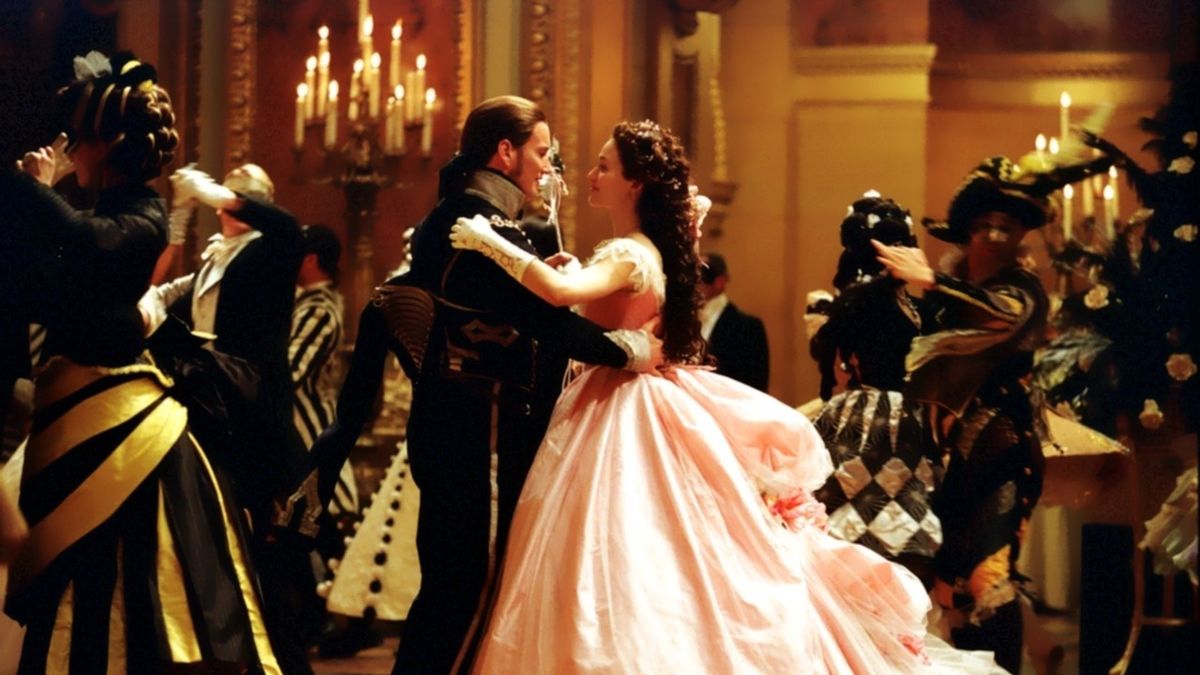The first time I watched Phantom of the Opera (2004) was in seventh grade choir class, the week before summer vacation. I couldn’t hear a word of it over everyone’s conversations, but it looked so beautiful. The candle-lit hidden passages, the soft and snowy cemetery, and the grand masquerade hall were all so wonderful above another dreary day of junior high. The theme would crescendo every once in a while and I’d change seats to try and get closer to the board and hear more of it. I got out of school a week later and the film buried itself into my subconscious.
A few years later, I saw the film on Netflix. It felt familiar. I googled it and seventh grade choir class came rushing back to me. I was excited I had finally found the film again, but worried it would not live up to the expectations my subconscious has been building up for so long.
The Phantom of the Opera (2004), directed by the late Joel Schumacher, is a movie based on the 1986 Andrew Lloyd Webber musical of the same name. It’s essentially a very intense episode of The Bachelorette, with the welcome addition of secret passageways and opera. As amazing as that may sound, it’s critical reception was mixed. One one hand, the film has a stinging 33% on Rotten Tomatoes, and on the other hand it was nominated for three Academy Awards. Some critics felt the source material was not respected; Gerald Butler did not portray the complexities of the outcast Phantom effectively and the direction went over the top. Others understandably had some leftover hate for Schumacher’s previous history of decimating existing material (Batman & Robin (1997)). However, I believe The Phantom of the Opera deserves much more love than the hesitant praise it has garnered so far.

First of all, the set designs and lighting are phenomenal. In the scene where the leading lady, Christine, first finds the Phantom’s underground canal, murky water scatters light onto the ceiling of the passageway and candles glow along moss-covered walls. This grittiness is paired with soft and fuzzy lighting that makes this scene feel medieval. As Christine approaches the Phantom’s lair, candles rise out of the water and light themselves one by one. It’s incredibly dramatic; The combination of this lighting with the set pieces create a mysterious, adventurous, and thrilling atmosphere around the Phantom. Christine’s face is only half lit as she follows after his dark figure. In another scene, when Christine is singing a solo in front of a full house, her face is lit up with a spotlight and the barrettes in her hair sparkle like diamonds. She is outlined in light and she looks angelic as her other love interest (Raoul) recognizes her. This play between light and darkness adds another dimension to the film. There’s the contrast between the hidden, boundless, exciting world of the Phantom and the safe, steady, springtime innocence of Raoul. There’s also the contrast of the lofty, lonely path of the Phantom’s artistic genius and the lighter promise of commitment and simple love from Raoul. I have to concede that the film is cheesy at times, but these moments pass and the visuals and grandeur of the set pushes them farther out of the viewer’s mind.
Second of all, Webber’s songs are compelling and the staging and cinematography of these pieces offer greater freedom to the story. The Phantom of the Opera’s theme is just grand. I sang the entire musical around my house for months after my first real viewing. There are beautiful lyrics like “And you’ll live as you’ve never lived before” alongside masterful lyrics like “Insolent boy! This slave of fashion”. The theme of this struggle between light and dark continues in these lyrics with the Phantom’s “Music of the Night” versus Raoul’s “All I Ask of You”. Christine drops the Phantom’s rose after hearing Raoul’s song so the Phantom has to say goodbye (but he doesn’t leave). Apart from the lyrics, the staging for large numbers like “Masquerade” and “Prima Donna” feel very theatrical. Both songs have moments in which the entire ensemble faces “the audience” and sings to them before the piece ends. In these large staged pieces, the medium of a film is better able to separate certain components and showcase them as a part of the whole. The audience can look skywards to the hem of Carlotta’s dress as it floats down around her, dream-like. Raoul can be seen pacing through a back corridor in one scene and the next scene can cut to Carlotta and the managers preparing for the play. There is more physical depth, perspective, and action displayed in the film on top of some of the staged elements of a play. Furthermore, the film uses color to represent the vibrant events surrounding the Phantom as opposed to the black-and-white future of the characters left after these events. This change of palette creates more mystery and anticipation for the dramatic antics of the Phantom in the extended flashback.

Every time I watch this film, I feel the same sense of thrill and wonder as I did when I first saw it in the dark of that choir room. The Phantom of the Opera was my first introduction to musical theater. It’s one of the last films I watched with my best friend before I moved across the country. There’s so much I love about the film and it holds a special place in my heart even after nearly a decade. I think everyone needs to give this gem a chance to sweep them off their feet and take them into all its secret passageways and hidden spectacles.
5/5 STARS
